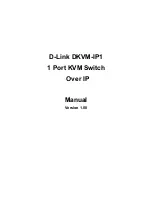
Preparing the Site
13
■
Bundling increases the required length of the cables. Bundling causes one or more
cables to follow a common path. However, the bend radius is different in different
parts of the bundle. If the bundle is large and unorganized, and there are many
bends, one cable might experience only the inner radius of bends, while another
cable might experience the outer radius of bends. In this situation, the differences
of the required lengths of the cables is quite substantial.
■
If you are routing the InfiniBand cable under floor, consider the height of the
raised floor when calculating cable path length.
Related Information
■
“InfiniBand Cable Types” on page 12
■
“InfiniBand Cable Bundling” on page 13
■
“Connecting InfiniBand Cables” on page 108
■
“Management Cable Requirements” on page 9
■
“Power Cord Requirements” on page 8
InfiniBand Cable Bundling
When bundling InfiniBand cables in groups, use hook and loop straps to keep cables
organized. If possible, use color-coordinated straps to help identify cables and their
routing. The InfiniBand splitter and 4X copper conductor cables are fairly thick and
heavy for their length. Consider the retention strength of the hook and loop straps
when supporting cables. Bundle as few cables as reasonably possible. If the
InfiniBand cables break free of their straps and fall free, the cables might break
internally when they strike the floor or are jerked from tension.
You can bundle the cables using many hook and loop straps. Do not bundle more
than 12 cables together. A fully configured switch has 216 InfiniBand cables, so that is
18 bundles.
Place the hook and loop straps as close together as reasonably possible. For example,
every 1 ft (0.3 m). If a cable breaks free from a strap, the cable will not fall far before
it is retained by another strap.
Related Information
■
“InfiniBand Cable Guidelines” on page 11
■
“InfiniBand Cable Path Lengths” on page 12
■
“Overhead Delivery of InfiniBand Cables” on page 14
■
















































